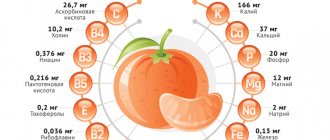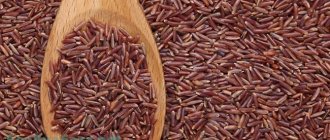Diabetes mellitus is an acquired or inherited metabolic disease, manifested by an increase in blood sugar levels, resulting from a lack of insulin in the body. People suffering from this disease must follow a strict diet to help normalize blood sugar levels.
Ancient healers considered chicory a panacea for all ailments. Modern healers use this plant no less widely. Let's try to figure out whether chicory is good for type 2 diabetes.
Chicory
Treatment for diabetes is very long and tedious. Tired of endless medications and diets, patients try to find more effective methods and often turn to traditional medicine. Of course, in order to improve your well-being, any means are good. But such a serious disease does not tolerate self-indulgence, and any addition to traditional treatment and the recommended diet must be agreed upon with the attending physician.
Traditional medicine considers chicory to be one of the effective remedies that perfectly complements medical treatment and gives good results. So is chicory good for diabetes? This drink has proven to be very useful in cases of other serious diseases, but will it be effective in this case?
Composition of chicory
The amazing properties of chicory have been known since ancient times. Therefore, this plant was widely used in practice by various herbalists. Even the healers of Ancient Egypt used chicory in their medicinal arsenal - a storehouse of various micro- and macroelements that are very valuable for the body, as well as a whole group of vitamins. It includes:
- inulin;
- tannins;
- choline;
- chicorin;
- organic acid;
- essential oil;
- a vitamin complex from such a set of vitamins A, B1, B2, C, PP;
- sodium;
- phosphorus;
- manganese;
- iron;
- potassium and others.
Interesting Facts
- The first mentions of the healing properties of chicory can be found in the treatises of the legendary ancient scientists (medics) Avicenna and Dioscorides.
- In Central Asia, small children are washed in a strong decoction of this plant to prevent overheating and sunstroke.
- The ash left over from burning chicory is mixed with sour cream to prepare a rub for eczema.
Inulin in chicory: effects on the body
The main reason why chicory is indicated for type 2 diabetes is its inulin content. Its impact on the body of a diabetic patient is difficult to overestimate. Inulin performs many important functions:
- Helps reduce glucose in diabetics, which will allow insulin-dependent patients to reduce the amount of insulin they take.
- Frees the body from radionuclides and heavy metals.
- Helps strengthen bones, reducing the risk of fracture.
- Significantly improves immunity.
- Helps normalize carbohydrate and fat metabolism.
- Reduces appetite.
Why is this plant useful for type 2 diabetes?
Among other plants that help regulate glycemia, chicory has been very successful for type 2 diabetes. Flowers and roots of the plant are used for treatment. They are used in the form of decoctions. In addition to the fact that chicory contains many useful substances and significantly reduces blood sugar, it also has diuretic and wound-healing properties, helps improve metabolism, strengthens blood vessels and stimulates improved cardiac activity in diabetes. But its use should be agreed with your doctor. Since this product has some contraindications, which must be known and taken into account when using chicory drinks.
Which chicory is better to choose?
On sale it comes in natural ground and soluble form as a powder or liquid extract.
The first contains more useful substances, the second is more convenient to use when preparing drinks. When purchasing, you should pay attention to the composition of the product, check for the presence of grains (rye, oats), acorns, etc. Additives have no practical benefit; they are used to reduce the cost of goods.
You should choose packaging with 100% medicinal plant content.
Soluble
This chicory comes in the form of powder, packaged in plastic bags, and liquid extract in jars.
The second contains a higher concentration of nutrients. It is prepared using a special root processing technology. It is dried, boiled, a base concentrate is obtained, from which a powder is subsequently made, or left in liquid form.
Upon visual inspection, the powder looks uniform, without lumps. It is hermetically packaged, because... When water gets in, lumps form and the product becomes unfit for consumption.
Instant chicory has a rich, bitter taste.
In liquid form, chicory is a thick extract of dark brown color with a rich bitter taste. It is packaged in glass jars, which are then stored at room temperature.
Ground
This chicory is obtained by drying, roasting the roots of the plant, and grinding them. Unlike instant, it has a strong aroma and contains a higher concentration of nutrients. Production technology allows us to preserve most of them unchanged.
Contraindications to drinking chicory drink
So, can you drink chicory if you have diabetes? The elements, vitamins and minerals contained in the named plant affect not only the causes of the pathology, but also other organs that this condition can harm.
If you decide to try a chicory drink as an aid to diabetes, consult your clinic about its effect on your body, especially if you have diseases such as:
- allergy to substances contained in chicory;
- respiratory diseases;
- problems with the gastrointestinal tract;
- varicose veins;
- renal or liver failure;
- chronic hemorrhoids.
Therefore, it is very important to learn about your body's reaction to chicory before you start consuming it. In general, other than the patient’s individual intolerance to any substances, there are no clear contraindications to the use of this remedy, and chicory is not prohibited for type 2 diabetes mellitus. The whole question is to do this not uncontrollably, but under the supervision of a qualified specialist.
Harm and contraindications
Chicory should not be taken if allergic reactions occur in the form of itching, redness, etc.
If you have low blood pressure, you should use it carefully and little by little, because some substances contained in the root have a vasodilating effect. Even 1-2 cups of the drink can cause nausea, weakness, and dizziness.
Chicory is contraindicated for:
- stomach ulcer, gastritis;
- varicose veins;
- hemorrhoids;
- kidney diseases.
Benefit
Most people are familiar with chicory as a healthy coffee substitute, because it also has a dark color and a bitter taste. It is drunk by everyone who is concerned about their health and proper nutrition. The root of this plant is most prized, but its other parts: leaves, flowers and stems can also provide good results.
Back in the 18th century, gardener Tamme prepared the first drink from chicory roots. And since then, many people have fallen in love with its tart taste, which is softer and more delicate than coffee, and much more beneficial for the body. Its beauty is that it can be drunk by children, the elderly, and pregnant or nursing mothers.
Why is chicory so beneficial for type 2 diabetes? What is the effect of its beneficial properties on the causes of diabetes? It is not without reason that they resort to the help of this plant when treating pathology. And the secret here is simple - chicory root contains fructose, which can replace sugar. And this allows you to reduce its level in the patient’s blood.
Inulin is also of great importance, creating a hypoglycemic effect in diabetic patients. It is able to have an excellent effect on reducing blood sugar, makes it possible to track glycemia and maintain sugar at a normal level, preventing its hyperglycemic surges.
Description of the plant
The herbaceous plant common chicory (lat. Cichorium intybus) is a perennial with a straight branched stem and beautiful blue flowers. The habitat covers the entire territory of the former Soviet Union. In pharmacognosy and the food industry, the stem, leaves, roots, flowers and seeds are used.
The root part contains up to 45% of the carbohydrate inulin, which is credited with healing properties in reducing sugar levels and normalizing carbohydrate metabolism.
In addition to this substance, chicory contains such useful substances as the bitter glucoside intibin, resin, sugar, protein substances, glucoside chicoryin, lactucin, lactucopicrin, vitamins A, C, E, B, PP, pectin and microelements (magnesium, potassium, sodium, and also iron).
Types of processing
The main raw material for obtaining chicory product is the rhizome of the plant. It is dried and processed, and the production of one or another type of drink depends on the method of its processing. There are three in total:
- Concentrated liquid extract is a kind of extract from the rhizome of a plant, which is added in the manufacture of confectionery or in some sauces as a flavoring, and is also taken in a diluted state for insomnia and nervous stress.
- Dry ground - fried root is ground into powder and used for food, poured with hot or cold water, used to improve intestinal function and ensure normal functioning of the bile ducts.
- Soluble powder is the most complex in its production method, but also the most useful for diabetes. It is much more convenient than the first two, because it does not require infusion, and it can be stored much longer.
Regularly consuming chicory for diabetes can simultaneously reduce cholesterol levels.
Chicory during pregnancy and diabetes
To enhance existing healing agents, you can use various natural supplements. For example, everyone is interested in whether pregnant women or during lactation can drink chicory if they have diabetes? Of course you can, this drink with the addition of blueberries will be especially useful. Just don’t overuse daily doses to avoid harm.
Traditional medicine in the treatment of the described illness has never denied how useful chicory is for diabetes. Traditional methods of treatment with various plants still resonate in the medical community today. But these methods should not be used instead of drug therapy, but together with it, under the supervision of the attending physician and in therapeutic dosages, along with taking medications and strictly following a diet. Such interaction can bring good results and make treatment more effective and faster.
Recipes with chicory
Various types of drinks are prepared from the medicinal plant. They are consumed hot as an analogue of coffee or tea. Infusions and drugs are taken in doses according to the recommended treatment regimen.
Infusion
To prepare the infusion, 2 tsp. chopped root pour 1 tbsp. boiling water Let it cool completely. Then drink 1-2 sips at regular intervals throughout the day.
Chicory infusion is drunk in small doses throughout the day.
Medicinal drug
It is prepared from crushed leaves.
Pour 1 tbsp. water 1 tsp. product, boil for 15 minutes, leave for 40 minutes. The medicine can be taken for intestinal diseases. A paste of leaves is applied as a compress for inflammation of the skin and bruises. Ground chicory left over after drinking drinks is used to treat boils and boils.
Decoction
To prepare it, 1 tbsp.
crushed root, pour 200 ml of water, bring to a boil and cook for 5 minutes. Then infuse for another 30. The decoction has astringent, anti-inflammatory properties, and has a calming effect on the nervous system. It can be used as a mouth rinse for toothache and stomatitis.
Hot drink
Ground chicory is prepared in the same way as coffee. Put 2 tsp in the Turk. product, add 200-250 ml of water and bring to a boil. Leave for 3-4 minutes. Add sugar and cream to taste.
The hot drink is very reminiscent of coffee.
From soluble chicory in powder form you can prepare drinks with the addition of honey, cocoa, and milk. For this, 1-2 tsp. dilute in hot water, add ingredients to taste.
When preparing a hot drink from liquid chicory extract, it is enough to dilute 0.5-1 tsp. in 1 tbsp. boiling water You can add rosehip or blueberry syrup to it to increase the amount of vitamins.
Advice from endocrinologists
If you still doubt whether chicory is good for diabetes, consult your endocrinologist. Based on the test results, he will determine whether chicory will harm you and prescribe doses that are harmless to your body.
Recent studies have convinced doctors of the absolute benefits of chicory for the prevention of hypoglycemia. Therefore, this drink is recommended for patients with diabetes of any type. In addition, endocrinologists offer a number of useful tips for people with this diagnosis:
- Follow a strict diet, because the foods consumed directly affect the increase in blood glucose levels.
- Avoid stressful situations; with high nervous tension, the hormone cortisol is released into the blood, which helps increase blood glucose.
- Control your body weight, as excess weight reduces the effectiveness of insulin and makes the situation worse.
- Leading a more active lifestyle so that more glucose is spent on muscle work and less of it remains in the blood; physical exercise makes the body less dependent on insulin.
- Instead of sugar, use its artificial substitutes: aspartame and saccharin, which are lower in calories and do not lead to the accumulation of excess glucose in the blood, while its natural substitutes, xylitol and fructose, are very high in calories and can lead to hyperglycemia. You can treat yourself to diabetic confectionery products with artificial sugar substitutes from time to time.
- Take vitamin complexes designed specifically for diabetics.
So, we found out that you can drink chicory if you have diabetes. By following these tips and using the drink as a catalyst, it will be easier to make significant progress in the fight against diabetes and begin to live a simple, normal life as a healthy person.
Treatment of diabetes
Diabetes mellitus is a group of metabolic diseases characterized by high levels of glucose (“sugar”) in the blood.
Why do we need glucose
The norm of blood glucose (sugar) in whole capillary blood is 3.3-5.5 mmol/l in the morning on an empty stomach (i.e. after 7-14 hours of overnight fasting) and up to 7.8 mmol/l after meals (i.e. 1.5-2 hours after the last meal).
Normally, in the human body, glucose is used by the cell as an energy source (in other words, the body’s cells “feed” on glucose from the blood). The more a cell works, the correspondingly more energy (glucose) it requires.
Glucose (the expression “blood sugar” is more often used, but this is not entirely true) constantly circulates in the human blood. There are 2 ways for glucose to enter the human body: - the first is through food containing carbohydrates, - the second is through the production of glucose by the liver (this is the reason that in diabetes mellitus, even if the patient has not eaten anything, the blood glucose level can be increased).
However, in order to be used as energy, glucose from the blood must go to muscles (to do work), fat tissue, or the liver (the body's glucose storage facility). This occurs under the influence of the hormone insulin, which is produced by beta cells of the pancreas. As soon as the blood glucose level rises after a meal, the pancreas instantly releases insulin into the blood, which, in turn, connects with insulin receptors on muscle, fat or liver cells. Insulin, like a key, “opens” cells to allow glucose to enter them, resulting in the level of glucose (sugar) in the blood returning to normal. Between meals and at night, if necessary, glucose enters the blood from the liver's depot, so at night insulin controls the liver so that it does not release too much glucose into the blood.
If a violation occurs at any stage of this process, diabetes mellitus occurs.
Types of diabetes
Diabetes mellitus type 1
(previously used the name: insulin-dependent diabetes mellitus) develops mainly at a young age (usually before 30 years of age, although type 1 diabetes mellitus can also develop at a later age).
Type 1 diabetes mellitus is caused by the cessation of insulin production by the pancreas due to the death of β-cells (responsible for the production of insulin in the pancreas). The development of type 1 diabetes mellitus occurs against the background of a special genetic predisposition (i.e. a person was born with it), which, when exposed to some external factors (for example, viruses), leads to a change in the state of the body’s immune system. The body of a patient with type 1 diabetes begins to perceive its pancreatic β-cells as foreign and protects itself from them by producing antibodies (similar to what happens when protecting against infection), leading to the death of pancreatic β-cells, which means severe insufficiency insulin.
Diabetes mellitus 1
type develops when at least 90% of the β cells of the pancreas die. Let us recall the mechanism of action of insulin, its function as a “key” that opens cells to sugar. In type 1 diabetes mellitus, this key disappeared from the blood (see figure).
Lack of insulin in type 1 diabetes mellitus The onset of type 1 diabetes mellitus is acute, always accompanied by severe symptoms of hyperglycemia (high blood sugar): - weight loss (the patient involuntarily loses weight), - a constant feeling of hunger, - thirst, dry mouth (the patient drinks a lot fluids, including at night), - frequent urination (in regular or large portions, including at night), - weakness.
If you do not consult a doctor in time and do not start treating type 1 diabetes with insulin, the condition worsens, and diabetic coma very often develops.
Diabetes mellitus type 2
(previously called insulin-dependent diabetes mellitus) is much more common than type 1 diabetes mellitus. The incidence of type 2 diabetes mellitus is typical for older people: it is detected, as a rule, after 40 years of age, although recently, according to WHO experts, the average age of patients with type 2 diabetes mellitus is getting younger.
About 80% of people with type 2 diabetes are overweight. Also, type 2 diabetes is characterized by heredity - a high prevalence among close relatives.
In type 2 diabetes, the pancreas continues to produce insulin, often in larger quantities than usual. Although there are also cases of type 2 diabetes mellitus with reduced insulin secretion.
The main defect in type 2 diabetes is that the cells do not “sense” insulin well, that is, they do not open well in response to interaction with it, so sugar from the blood cannot fully penetrate inside (see figure). Blood sugar level remains elevated. This state of decreased sensitivity to insulin is called insulin resistance.
Low sensitivity to insulin in type 2 diabetes mellitus You can figuratively imagine that the “keyholes” (scientifically speaking - insulin receptors) on the cell doors are deformed, and there is no perfect match with the keys - insulin molecules. It takes more effort (more keys, i.e. more insulin) to overcome the insulin receptor defect. The pancreas cannot supply a sufficient amount of insulin into the blood to overcome insulin resistance and completely normalize blood sugar levels, because In type 2 diabetes mellitus, the capabilities of β cells are still limited.
As a result, with type 2 diabetes, a paradoxical situation arises when there is a lot of both insulin and sugar in the blood at the same time.
Type 2 diabetes mellitus, unlike type 1 diabetes mellitus, begins gradually, often completely unnoticed by the patient. Therefore, a person can be sick for quite a long time, but not know about it. Elevated blood sugar (glucose) levels may be detected by chance during an examination for some other reason.
At the same time, there are cases with clear manifestations of hyperglycemia:
- - weakness, fatigue, - thirst, dry mouth (the patient drinks a lot of fluids, including at night),
- - frequent urination (regular or large portions, including at night),
- - itching of the skin (especially in the perineal area),
- - slow wound healing, - frequent infections, - blurred vision.
- Diabetic coma develops much less frequently, usually
- - if type 2 diabetes mellitus is accompanied by some other very serious disease: pneumonia, serious injury, suppurative processes, heart attack, etc.
Treatment of diabetes
Treatment for diabetes differs depending on the type of diabetes.
In type 1 diabetes mellitus, which occurs as a result of an absolute insufficiency of insulin secretion by the own pancreas, constant self-monitoring and insulin treatment are required to preserve life. It should be emphasized that treatment with externally administered insulin is the only treatment option in this situation. The selection of doses and treatment regimens for diabetes mellitus with insulin is carried out individually, taking into account age, gender, physical activity, and individual sensitivity to insulin.
For type 1 diabetes mellitus
sometimes, at the very beginning of the disease, after normalization of blood glucose during treatment of diabetes mellitus with insulin, the need for it suddenly begins to decrease until it is completely canceled. But this is not recovery. This phenomenon is called the “honeymoon” of diabetes, or scientifically, remission. This is explained by the fact that after blood sugar is normalized with the help of insulin, the β cells that have not yet died can work for some time. Subsequently, they all die, and the person needs treatment for diabetes mellitus with insulin for life. Anyone who develops type 1 diabetes for the first time should be warned by their doctor about the possible occurrence of such a situation and what to do in this case.
Treatment of diabetes mellitus with insulin can be carried out using insulin syringes, pens or an insulin pump.
Insulin pump therapy is an alternative treatment for diabetes mellitus in people who heavily use a syringe or pen to inject insulin and regularly measure their blood sugar levels. Insulin pump therapy is used instead of treating diabetes with injections. The pump is worn on the body or on clothing, for example, on a belt. Currently, about 250 thousand people around the world use insulin pumps.
The main goal of treating type 2 diabetes is to improve the sensitivity of cells to insulin. The causes of poor insulin sensitivity are not yet fully understood. However, it has long been known that the most powerful factor in the formation of insulin resistance is excess weight, i.e. excessive accumulation of fat in the body. Numerous scientific studies and long-term observations of patients show that weight loss during the treatment of type 2 diabetes in most patients can achieve a significant improvement in blood sugar levels.
In type 2 diabetes, normalizing weight can lead to complete normalization of blood sugar for a long time, although this cannot be called a complete recovery.
If diet and exercise aimed at weight loss do not provide sufficient effect in the treatment of type 2 diabetes, you have to resort to medication. They are available in tablets. Some of them act on the pancreas, increasing insulin production, while others improve its effect (reduce insulin resistance). Thus, the drugs themselves used to treat type 2 diabetes mellitus do not lower blood sugar; insulin does this; therefore, to obtain the effect of tablets in the treatment of diabetes mellitus, a preserved reserve of pancreatic β-cells is necessary. This makes it clear why it is pointless to use tablet drugs in the treatment of type 1 diabetes, because most of the β cells have already died.
Insulin is often used to treat type 2 diabetes. Treatment with insulin for type 2 diabetes mellitus can be prescribed as a temporary measure, for example, during surgery, severe acute illnesses, or as permanent treatment. This is why it is currently not recommended to call type 2 diabetes mellitus non-insulin dependent. The type of diabetes treatment does not determine the type of diabetes.
Diet plays the most important role in the treatment of diabetes.
Diet for diabetes
Despite the common goals in the treatment of different types of diabetes (elimination of symptoms of high blood sugar, minimizing the risk of hypoglycemia, prevention of complications), diet patterns for type 1 and type 2 diabetes mellitus differ significantly. There is no single diet plan for diabetes mellitus.
In type 1 diabetes mellitus, the occurrence of which is associated with the death of beta cells of the pancreas and insulin deficiency, the main method of treatment is insulin replacement therapy, and dietary restrictions, according to modern views, are of an auxiliary nature and should be given only to the extent that insulin therapy differs from insulin production in a healthy person.
The fundamental principles of prescribing a diet for type 1 diabetes mellitus have been subject to critical revision in recent years.
One of the principles of the traditional diet for diabetes is the recommendation to consume a strictly defined, identical amount of calories every day. Each patient was prescribed a daily calorie requirement based on their “ideal weight.” This makes no sense and is impossible for the following reasons:
a) in healthy individuals with normal weight, the balance between energy intake and expenditure varies greatly from day to day. Energy expenditure in healthy individuals is variable because their physical activity is variable. Consequently, if a patient with type 1 diabetes is prescribed a given diet with a daily consumption of a fixed, identical amount of calories, then in order to maintain a normal weight, one would have to recommend an equally given, strict plan of physical activity for every day, which is absolutely unrealistic.
b) in patients with type 1 diabetes mellitus with normal weight and a properly selected insulin treatment regimen for diabetes mellitus, appetite regulation does not differ from that in healthy individuals. The fact that they sometimes have to be forced to eat to prevent hypoglycemia, even in the absence of appetite, is most often a consequence of not entirely adequate insulin therapy.
Improved treatment regimens for diabetes mellitus using insulin and self-monitoring of metabolism based on blood sugar levels give the patient the opportunity to regulate food intake only depending on the feeling of hunger and satiety, like healthy people. Thus, the diet of a patient with type 1 diabetes mellitus corresponds to a complete healthy diet (balanced in calories and content of essential nutrients). The only difference is that the insulin injected does not “know” when or how much you eat. Therefore, you yourself must ensure that the action of insulin corresponds to your diet. Therefore, you need to know which foods increase your blood sugar.
The main treatment method for type 2 diabetes is normalization of body weight through a low-calorie diet and increased physical activity. Diet for type 2 diabetes is very important; it is one of the significant components that allows you to achieve success.
All food products consist of three components: proteins, fats and carbohydrates. They all contain calories, but not all increase blood sugar.
Only carbohydrates have a pronounced blood sugar-raising effect. What foods contain carbohydrates? It's easy to remember: most foods are plant-based, and animal foods are limited to liquid dairy products. It is important for you to know whether blood sugar rises after certain foods, and if so, by how much. There are types of carbohydrate foods after which blood sugar either does not rise at all or rises only slightly.
All carbohydrates can be roughly divided into two groups: those containing rapidly absorbed (“fast”) carbohydrates and slowly absorbed (“slow”) carbohydrates. Products with “fast” carbohydrates contain refined sugars and include preserves and jams, candies, sweets, fruits, and fruit juices. “Fast” carbohydrates cause a sharp increase in blood sugar (depending on the amount of food eaten) because they are quickly absorbed into the blood, so it is better to exclude them from the diet for diabetes. “Slow” carbohydrates are much more beneficial for patients with diabetes, because they take much longer to be absorbed. In addition, the absorption of sugars is slowed down by the fiber contained in food, so the diet when treating diabetes should be enriched with foods rich in fiber.
Here are a few simple rules to follow when treating diabetes: food should be taken in small portions and often (4-6 times a day); adhere to the established diet - try not to skip meals; do not overeat - eat as much as recommended by your doctor; use bread made from wholemeal flour or with bran; vegetables (except potatoes and legumes) should be eaten daily; Avoid eating “fast” carbohydrates.
Exercise for Diabetes Physical exercise in the treatment of diabetes is very important: it increases the sensitivity of body tissues to insulin and, thus, helps reduce blood sugar levels.
Housework, walking, and jogging can be considered physical activity. Preference should be given to regular and dosed physical exercise: sudden and intense exercise can cause problems with maintaining normal sugar levels.
If you are an athlete or sportswoman, you have no contraindications to playing sports, provided that your blood sugar levels are well controlled and all necessary measures are taken to prevent a significant decrease in it.
Prevention of complications of diabetes Patients with diabetes have an increased risk of developing complications from the heart and blood vessels (especially in the legs and kidneys). Regular physical activity, sometimes just walking, is enough to prevent circulatory problems in the feet.
If you have diabetes, an untreated wound or abrasion on the foot can develop into a serious problem. Even minor cuts or scrapes on the feet take longer to heal than in patients without diabetes and require increased attention. The key to preventing these problems is wearing well-fitting shoes and checking your feet frequently. Use a mirror if you find it difficult to examine all areas of your feet, and remember that foot injuries are often painless at first and may go unnoticed for a long time if you are not careful enough.
Patients with diabetes have an increased risk of kidney dysfunction and heart disease several years after diagnosis. There is good evidence that good blood sugar control reduces this risk. Also, to prevent complications of diabetes mellitus, it is necessary to undergo preventive treatment 2 times a year.
Blood pressure control is also important. Check your blood pressure regularly. If it is elevated, your doctor will prescribe treatment for you.











